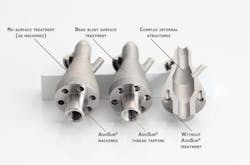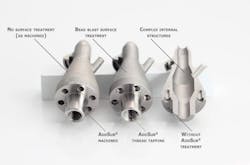Additive and subtractive manufacturing combo service launches
Guandong Province, China - Rapid manufacturer STAR Prototype has launched AddSub Manufacturing, a service that combines metal additive manufacturing (3D printing) and subtractive manufacturing (5-axis CNC machining) to deliver complex, low-volume components that would previously have required the input of two separate bureaus.
“Most metal 3D-printed parts are not used as prototypes, but as complex low-volume manufactured components, and many of these parts need certain high-precision features that are virtually impossible to produce with 3D printing alone," explains Gordon Styles, president of STAR Prototype. “The problems arise because most 3D printing companies don’t carry out secondary machining, meaning the customer needs to take care of the work themselves or farm it out to a specialist machining bureau.”
The AddSub Manufacturing system allows parts to be transferred directly from its 3D printing machines onto its CNC machines without having to be removed from the build plate—a development that also resolves the troublesome issue of subcontractors getting to grips with 3D-printed parts.
STAR Prototype sees the Subtractive CNC element of AddSub as being ideal for mating faces, precision bores, tapped holes, spigots, and other very necessary high-precision features, with uses in motor-sport, aerospace, military, medical, and dental applications.
For more information, please visit www.star-prototype.com.

